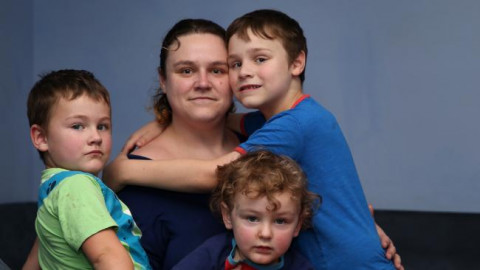
Rick Morton
The executives of the flagship National Disability Insurance Scheme, which received guaranteed funding worth tens of billions of dollars in last week’s budget, have launched a crackdown on support funding to keep a lid on ballooning costs.
The razor is being taken to hundreds, possibly thousands, of annual support plans as they come up for review, demonstrating a new hawkish approach from National Disability Insurance Agency bosses but resulting in the loss of funding and support for vulnerable families. In many cases, support packages for families have been cut by half.
The early years of the $22 billion program’s rollout saw wild variability in the value and type of support being granted to participants, forcing executives to come up with a way to claw back funding that has “an impact on sustainability”. In the process, people with disabilities and their families have been shocked by sudden reversals of fortune.
The move comes as the government and Labor are locked in an intensifying political battle over the scheme’s funding.
In last Tuesday’s budget, Scott Morrison proposed lifting the Medicare Levy by 0.5 per cent from 2019 to fully fund the NDIS, a move attacked by Bill Shorten who has demanded the deficit levy on high-income earners, which is due to end on June 30, be retained and the Medicare Levy increase restricted to those with incomes above $87,000.
In Sydney’s west, mother of three Kathryn Gilbert is stuck in a fight with the NDIS over support for her seven-year-old son Kaelab that was initially “cut in half”.
Ms Gilbert’s two other children, Tyler, 5, and Christian, 3, have autism and NDIS plans, but the situation with Kaelab was “the most concerning” after more than $10,000 in funding was cut on review last October.
“The review was a horrible experience,” Ms Gilbert said. “I was told we would have four hours to go over everything he needed but we only had 45 minutes. He lost his community support placement with Barnardos, therapy support. It was all cut. Some of it has been put back now, but not to the extent it was in the first plan.”
In a rushed rollout — the scheme was brought in one-year ahead of schedule and must add more than 300,000 places between now and 2019-20 — the NDIA has battled on several fronts to control costs.
NDIA chief executive David Bowen last night was emphatic that system-wide cost-cutting was not taking place.
“There is no systemic approach to trying to reduce package costs,” Mr Bowen said.
Ms Gilbert said disability support “should have been such an easy process”. “I’ve got my own issues and I am struggling to get out the door each day and fight for my kids,” she said.
“This is going to sound horrible because I am not unappreciative of the money but I had such high hopes for the NDIS, we were told it was going to change our lives.
“Well, it did. It made them more stressful and uncertain. It’s the false hope that gets me.”
In its quarterly report, the NDIA noted there was a “mismatch” between reference packages — rough cookie-cutter guides for how much packages ought to be in normal circumstances — and the value of annual support packages which affected the financial sustainability of the scheme.
“The management’s response to this is to closely ensure that significant variations away from reference amounts (above and below) are closely monitored and justified,” a spokesman said.
“Reference packages are not used as a tool to reduce package amounts to below what is reasonable and necessary. Individual circumstances are considered in determining budgets, including goals and aspirations.
“A reference package does not restrict the amount or range of support provided to a participant, but acts as a starting point for planners to use for similar cohorts. It provides amounts that are suitable for a given level of support needs that has been adjusted for individual circumstances.”
The agency has claimed the implementation of this process has started to reduce funding blowouts and a hearing into the scheme by federal parliament’s Joint Standing Committee on the NDIS last Friday heard startling evidence about how widespread the new approach is.
Donna Law, whose 21-year-old son has severe disabilities, was told by an NDIS planner: “Donna, watch out because your son’s next plan is going to be cut by about half.”
Clare Steve had funding cut in half by the NDIA and wanted to do another review.
“I spoke to multiple people, because no one would actually give me the paperwork to do the next lot of reviewing,” Ms Steve told the hearing.
“I was told by multiple people that it was a mistake: ‘Do not go for another review.
“If you go for another review, you could get your funding cut again’.”